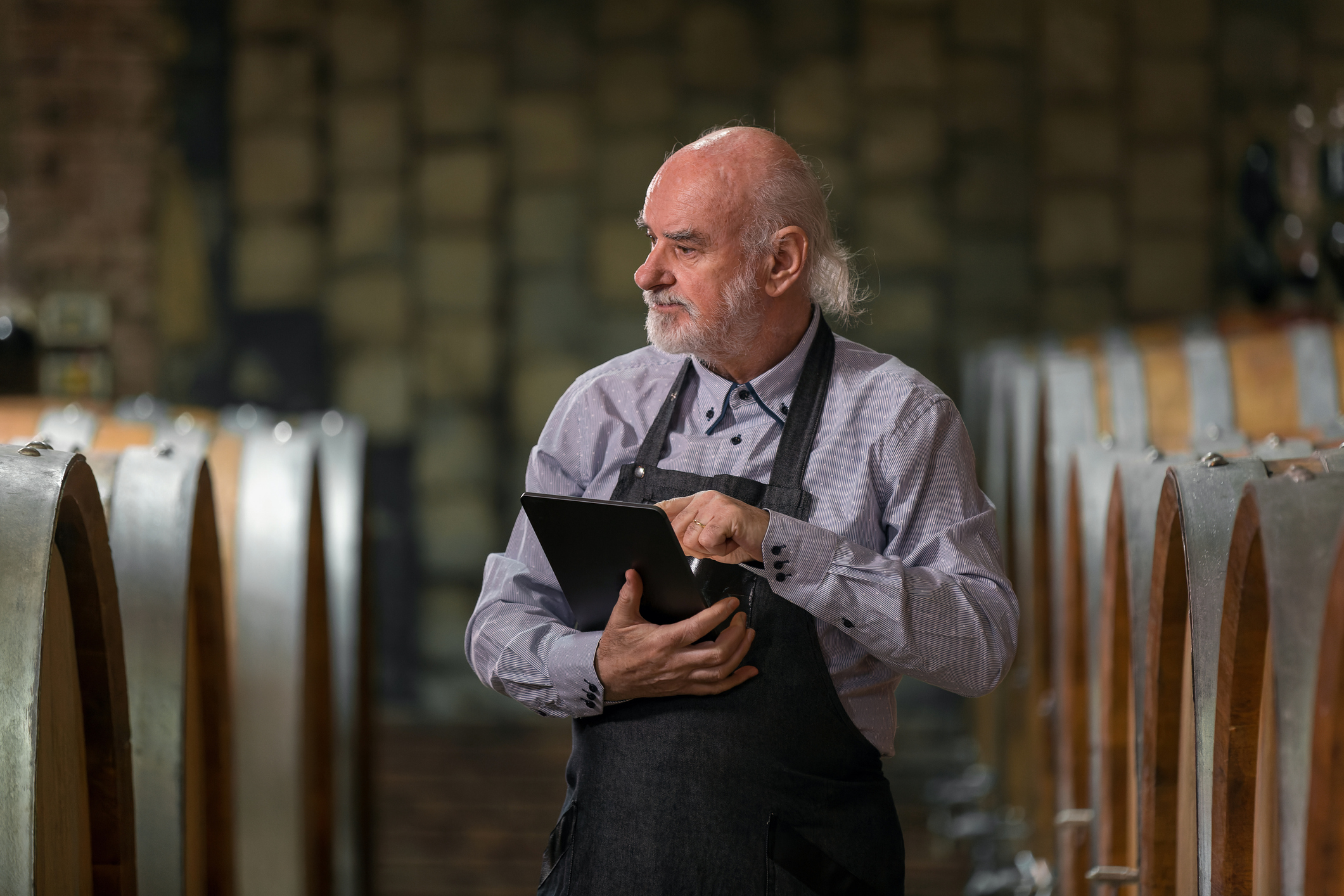Bevica suggests how wineries can make software work for them
As many wineries grow and diversify, Bevica believes that software solutions can help them streamline current practices and find new revenue.

Making wine is a demanding process. Combining agriculture, industry and commerce, producers have to juggle many competing concerns. Whether it is managing weather threats, blending varieties or shipping to a distributor, there is always something else on the to-do list. It is perhaps then fair to say that wineries do not have a lot of time to consider business software solutions.
Yet a winery’s work can benefit from an end-to-end business management software solution. As Bevica advocates, an enterprise resource planning (ERP) software system is just as useful for wineries as for retailers or distributors. Clients such as Chapel Down have seen how Bevica‘s technological solutions can help with the financial and operational tasks winemakers complete every day. Such software can streamline existing processes, as well as open new avenues for businesses.
Supporting the core business
A cloud-based software-as-a-service system, regrettably, cannot prune vines, toast barrels or attach labels to bottles. Yet it can streamline or automate many of the day-to-day operations of a winery. Far from adding to the workload, software like Bevica can manage several essential tasks.
Managing an inventory, for instance, is vital work in the winery. The many stages of purchasing, production, storage and rotation all need planning and tracking, necessitating a system that can keep track of inventory at every moment.
Having easy access to inventory data ensures that decisions on purchasing and selling can be made quickly but authoritatively. In an industry that is highly seasonal (both in production and distribution) knowing the state of the inventory is key to making the right calls for the business.

Moreover, a solution specifically designed for the drinks industry can track inventory as it functions in the winery. With options to track bins and batches, for instance, Bevica’s inventory management capabilities mirror the way wine is produced.
A tailored and secure, cloud-based solution is also worth considering when dealing with duty and regulatory compliance. Producing wine opens a complex world of tax obligations, as well as various rules specific to the industry. Having a system with compliance and duty functionality built in saves a job in tracking it separately.
Moreover, an ERP system does not merely bring a winery’s functions together, but can also make them more efficient. Bevica’s barcode functionality, for instance, means that inventory information is accessible instantaneously on the winery floor. The system can save time as well as clarify information.
Diversifying the business model
For many producers, the model of making wine and passing it to a distributor is no longer the full picture. Although this is still the core of the business, diversifying revenue streams is key in the 21st Century. For many of those potential streams, ERP software like Bevica can make set-up, or even expansion, easier.
Selling bottles at the cellar door is, of course, an old tradition. Running those sales through a comprehensive software solution, however, can optimise the operation. The capacity to generate sales reports and manage inventory means it can be run just as efficiently as the winery.
More crucially, the digital age comes with an increased expectation that customers can buy online. The cellar door is no longer enough; consumers expect a web presence. Though a potentially large revenue stream, ecommerce can present a huge challenge for the uninitiated.
Partner Content
A comprehensive software solution can connect existing sales channels with new ones. Bevica, for instance, has Shopify integration, allowing wineries to manage web and in-person sales together.
Wineries are also increasingly turning to tourism as a dependable source of income. The range of experiences on offer is staggering, from tastings and tours to concerts and hiking trails. Wine tourism has emerged as a multi-billion dollar global industry.

Beyond selling tickets and generating reports (analogous to ecommerce operations), ERP software can hugely impact a tourism operation in its customer relationship management (CRM) capabilities.
An integrated CRM system like Bevica collates information on customers and venues in one, easily accessible place. This ensures that, in marketing events or new initiatives, producers can find the customers most likely to engage and build a tailored, personal relationship that can grow over time.
Ease of use for a busy team
Of course, one reason why many wineries do not implement ERP solutions is that winemaking demands so much of their time. With producing the next vintage the most pressing concern, a substantial operational change may never take top priority.
That is why simplicity and adaptability is a key consideration in choosing the right software for a business. This often means checking which systems are already in use at the winery, and selecting a software that integrates well with them.
That is part of the reason why Bevica is powered by Microsoft Dynamics 365 Business Central. Using that software as a base means that Bevica is already integrated into the programmes many winery teams already use, such as Excel, Teams and Outlook. Although the technology landscape looks different for every producer, choosing software that meshes well with existing known tech is a sensible decision.
It is also worth considering system access and futureproofing. For some operations, sitting at a desktop computer is the usual state of affairs; if working in the winery or warehouse, it may well be a tablet or a phone instead. Investigating online and app functionality may determine whether a particular software is right for a winery. Bring your own device (BYOD) systems, like Bevica, offer the flexibility to work anytime, anywhere.

As a final consideration, wineries should check the timescale of any new system’s introduction. Although the winemaker’s year is always busy, selecting a quieter time period should minimise the effects of a transition. This can also be mitigated by selecting an appropriate software package. Providers such as Bevica offer different tiers catered to wineries’ business needs which, crucially, have different timescales for installation.
If those considerations can be met, an ERP software system can be a powerful tool for a winery. With producers doing more than ever to ensure profitability, software can take some of that load off the team. Products like Bevica could never replace the human touch of the winemaker, after all, but software solutions can offer them more time to craft the best possible wine.
For more information about Bevica, visit www.bevica.com.
Related news
Refined wines define Martínez Lacuesta's 130-year legacy




